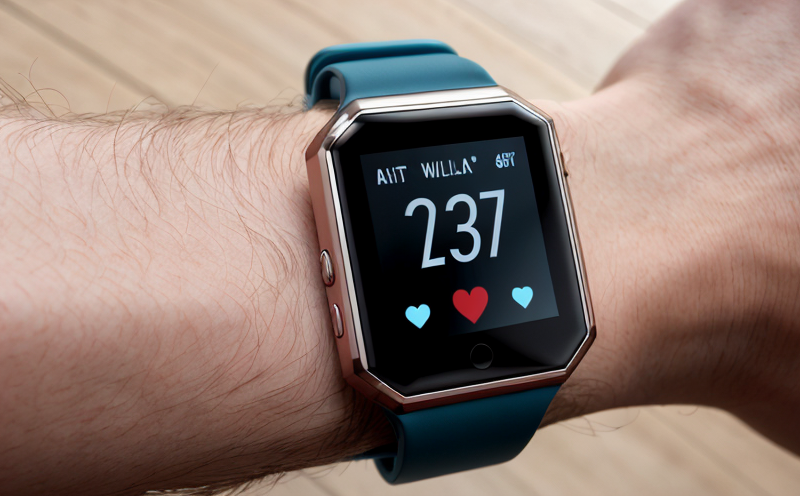IEC 60601-2-49 Physiological Monitor Wearable Device Testing
The IEC 60601-2-49 standard is a critical component in the medical device industry, particularly for physiological monitor wearable devices. This standard ensures that such devices are safe and effective for use by patients in healthcare settings. Compliance with this standard is mandatory for manufacturers to ensure their products meet international safety and performance requirements.
Physiological monitoring wearables encompass a wide range of devices including heart rate monitors, blood pressure cuffs, oximeters, and other sensors designed to continuously monitor patient health parameters. These devices are often worn by patients in hospitals, clinics, or used at home for remote monitoring. The standard addresses the safety aspects related to the electrical performance of these devices, particularly with respect to the potential for electric shock risks.
The testing covers various parameters such as insulation resistance, protective earth continuity, and power frequency voltage withstand test (PWV). These tests are designed to ensure that the device does not pose an electrical hazard under normal conditions or when subjected to fault conditions. The standard also includes requirements for the marking of the device, which must be legible throughout its intended life.
The testing process involves multiple steps:
- Preparation of the device by cleaning and calibrating it according to manufacturer specifications.
- Conducting insulation resistance tests using appropriate voltage levels.
- Performing protective earth continuity checks to ensure effective grounding.
- Carrying out power frequency voltage withstand tests (PWV) to evaluate the device’s ability to withstand overvoltages without malfunction or damage.
The testing is conducted in a controlled environment that simulates real-world conditions, including temperature and humidity variations. This ensures that the devices are tested under conditions similar to those they will encounter during use. The results of these tests provide assurance that the device meets safety standards set forth by IEC 60601-2-49.
The standard also includes detailed acceptance criteria for each test, which must be met to ensure compliance. These criteria are based on internationally recognized standards such as ISO and IEC. The acceptance criteria specify allowable limits for insulation resistance, protective earth continuity, and PWV voltage levels. Compliance with these criteria is essential for the safe use of physiological monitor wearable devices.
The importance of this standard cannot be overstated, especially in light of increasing reliance on wearable technology in healthcare settings. By ensuring that these devices meet safety standards, IEC 60601-2-49 helps to protect patients and healthcare providers from potential electrical hazards. This is particularly important given the continuous nature of monitoring involved with physiological monitors.
The testing process for compliance with this standard is rigorous and involves multiple stages, each designed to address specific aspects of safety. The use of internationally recognized standards ensures that the tests are consistent and comparable across different jurisdictions. This consistency is crucial in a global market where devices must meet varied regulatory requirements.
Scope and Methodology
The scope of IEC 60601-2-49 covers the electrical safety aspects of physiological monitor wearable devices. The standard provides detailed guidance on how to conduct tests for insulation resistance, protective earth continuity, and power frequency voltage withstand tests (PWV). Compliance with these requirements ensures that the device is safe for use in healthcare settings.
The methodology involves a series of steps designed to ensure the safety of the device:
- Preparation: The device must be cleaned and calibrated according to manufacturer specifications before testing begins.
- Insulation Resistance Test: This test checks the electrical resistance between live conductors and earthed or grounded parts. It ensures that there is sufficient insulation to prevent electric shock risks.
- Protective Earth Continuity Check: This test verifies that the protective earthing conductor is effective, ensuring that any fault current can be safely conducted to earth.
- PWV Test: This test evaluates the device’s ability to withstand overvoltages without malfunction or damage. It ensures that the device can handle electrical stress in real-world conditions.
The acceptance criteria for each of these tests are based on internationally recognized standards such as ISO and IEC. These criteria specify allowable limits for insulation resistance, protective earth continuity, and PWV voltage levels. Compliance with these criteria is essential for the safe use of physiological monitor wearable devices.
Industry Applications
| Device Type | Application |
|---|---|
| Heart Rate Monitor | Monitoring heart rate during exercise or in clinical settings. |
| Blood Pressure Cuff | Measuring blood pressure in patients at home or in clinics. |
| Oximeter | Detecting oxygen saturation levels in the blood, useful for monitoring respiratory conditions. |
| Skin Temperature Sensor | Monitoring skin temperature changes, which can indicate various health conditions. |
- These devices are used in hospitals and clinics to monitor patient health continuously.
- They are also utilized by patients for remote monitoring at home, providing peace of mind and better management of chronic conditions.
- The data collected from these devices is often transmitted to healthcare providers for analysis and treatment adjustments.
The use of physiological monitor wearable devices in healthcare settings has increased significantly due to advancements in technology. These devices provide real-time monitoring capabilities, which are crucial for early detection and management of health issues. Compliance with IEC 60601-2-49 ensures that these devices can be used safely and effectively.





